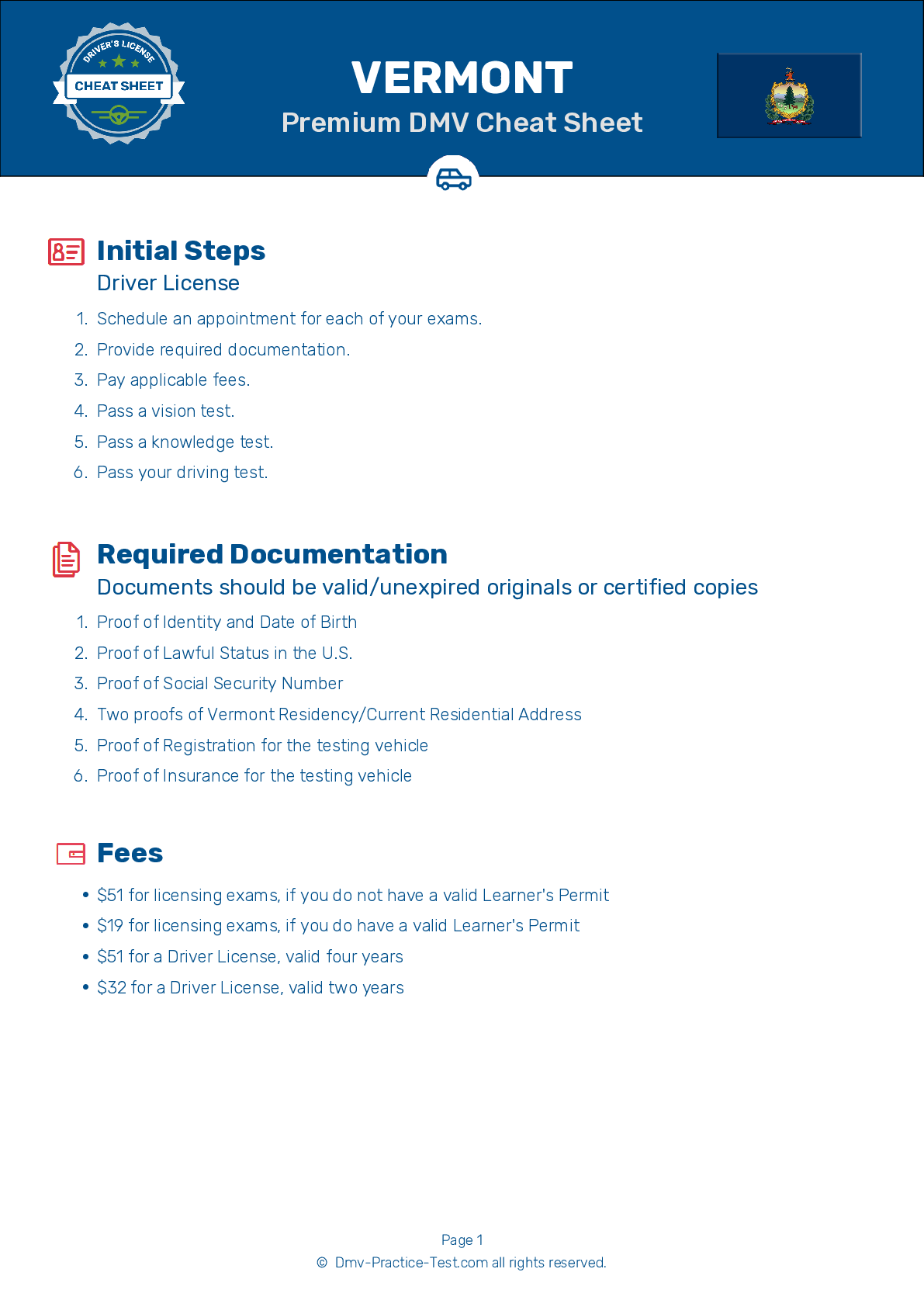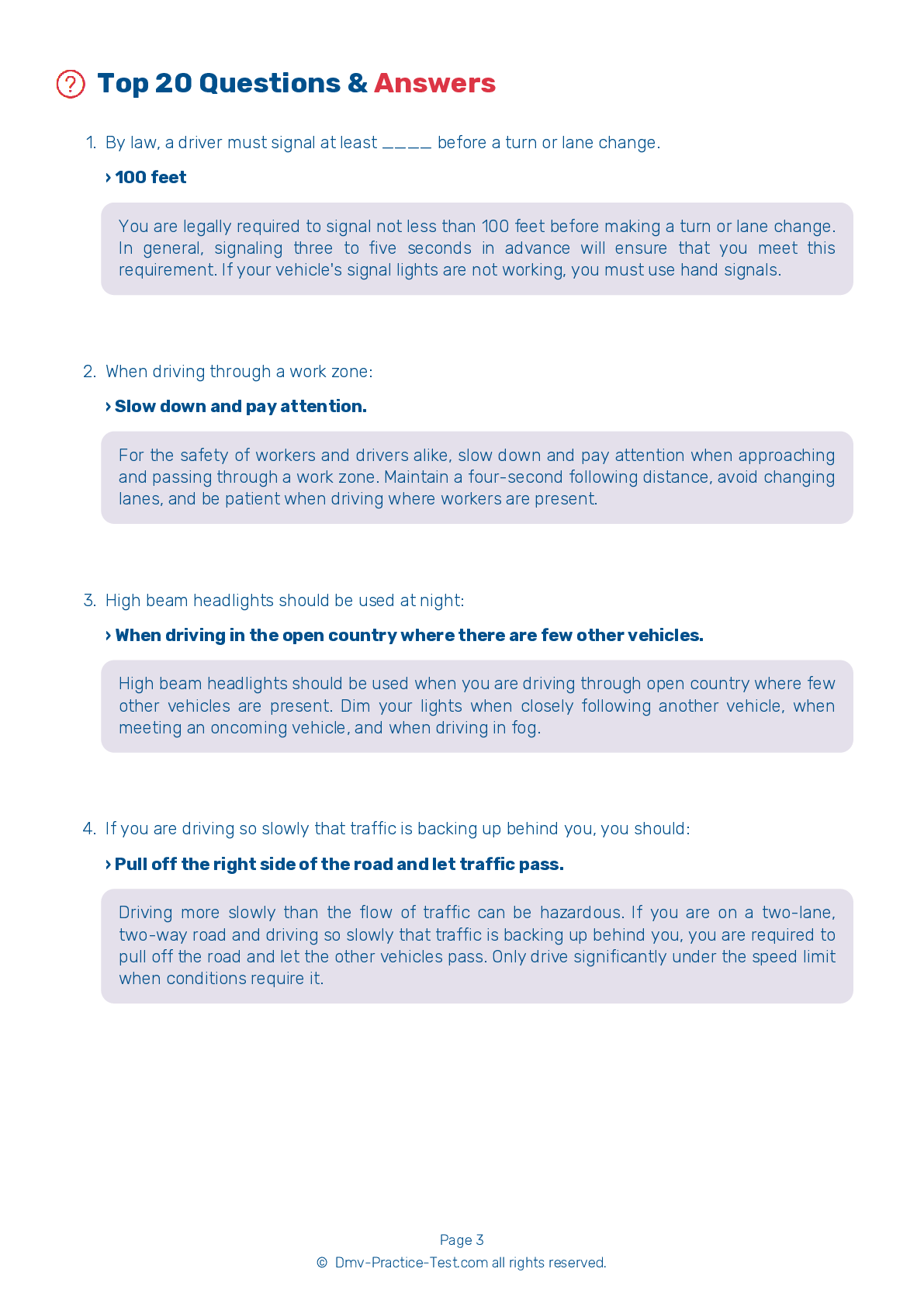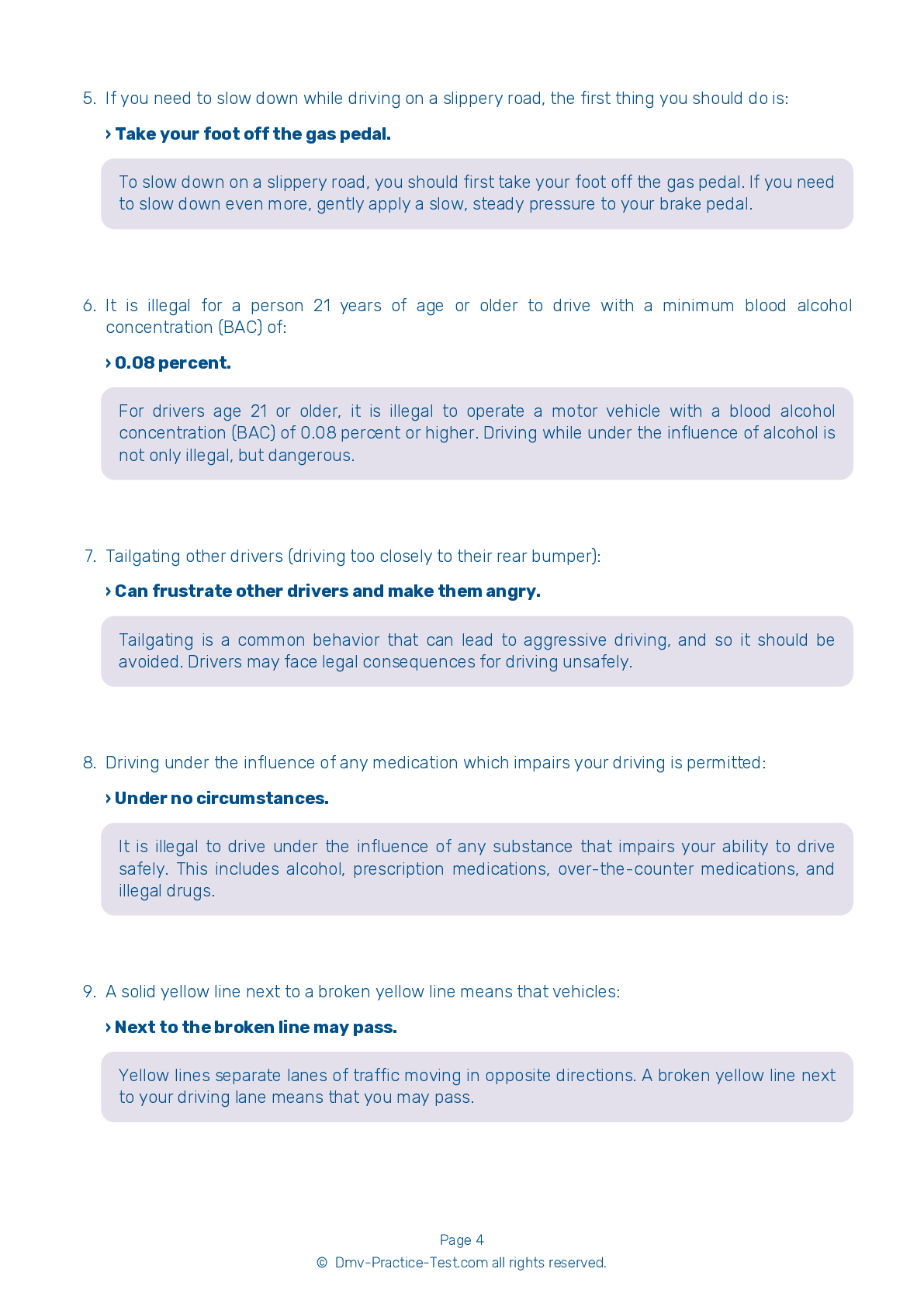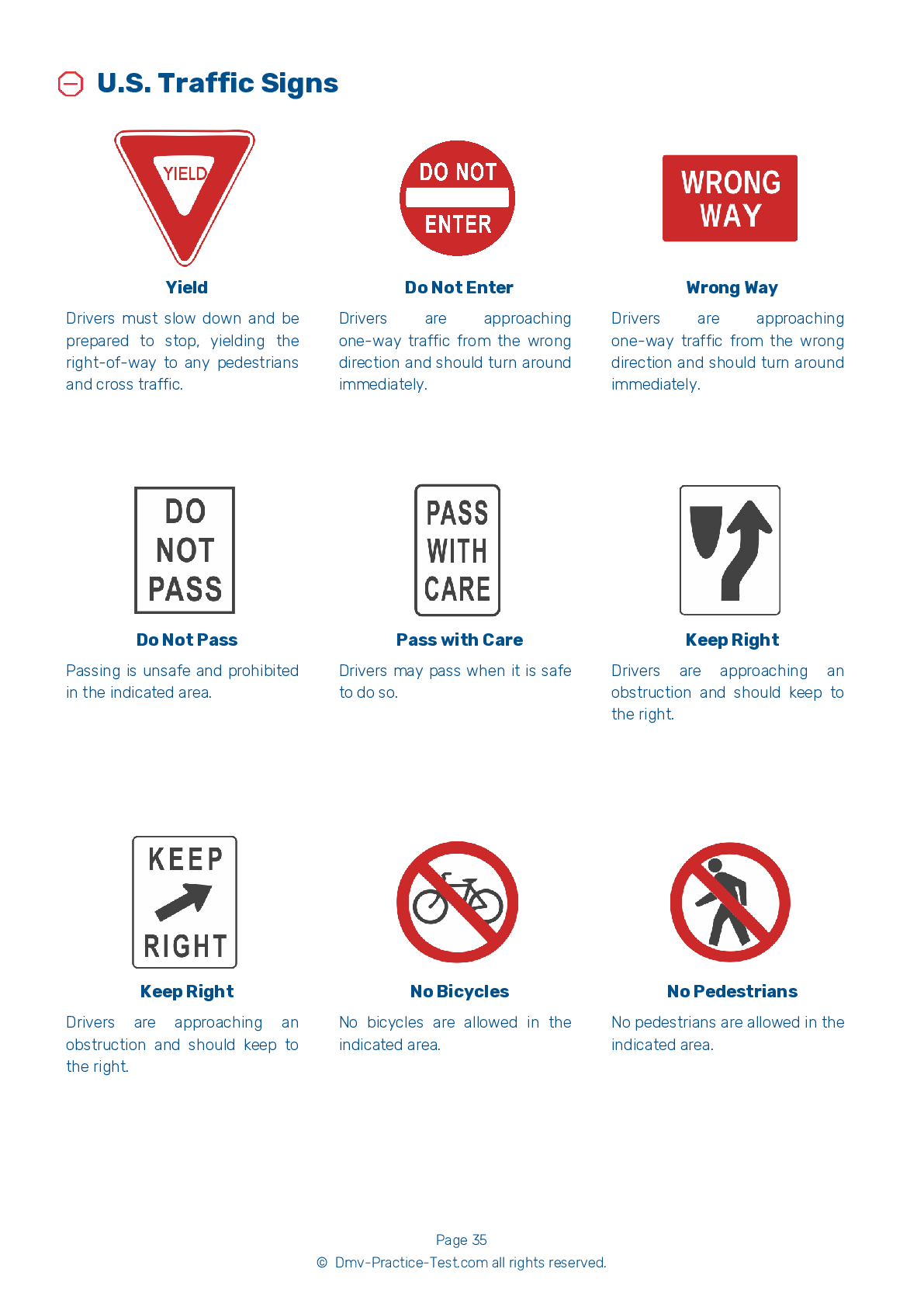FREE Vermont DMV Practice Test #14 Page 3 of 3
The Vermont DMV practise examinations have been updated for January 2025. It includes questions based on the Vermont Driver Handbook's most significant traffic signals and legislation for 2025. Use actual questions that are very similar (often identical!) to the DMV driving permit test and driver's licence exam to study for the DMV driving permit test and driver's licence exam.
On the practise exam, each question gets a tip and explanation to help you remember the concepts. The written component of the official Vermont DMV test will include questions about traffic rules, traffic signs, and driving statutes, as well as knowledge from the Driver Handbook.
To obtain a passing grade, you must correctly answer 16 of the 20 questions. Use the practise exam provided by the Vermont Department of Motor Vehicles to help you prepare for your instruction permit or driver's licence.
The DMV exam is available in several languages.
Using any kind of testing assistance will result in an automatic fail, and the DMV may take additional action against your driver's licence, so stay away from it.
14 . You are driving in the right lane of a multilane highway and want to move into the left lane. You should:
Before changing lanes, you should always verify that there are no other vehicles in the lane you want to enter by checking your mirrors and looking over your shoulder in the direction you plan to move. You should signal every time you change lanes.
15 . This road sign means:
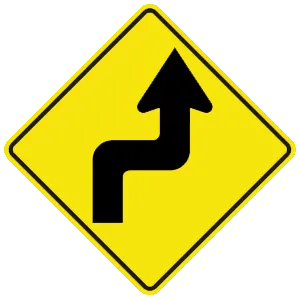
This sign indicates that the road ahead turns sharply to the right and then sharply to the left.
16 . Alcohol causes:
Consuming even a small amount of alcohol will impair your vision, judgment, concentration, and coordination.
17 . Motorcycles are entitled to:
Lane usage for the motorcyclist is critical. Motorcycles are entitled to the same full lane width as all other vehicles.
18 . This road sign means:
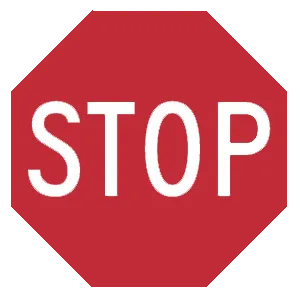
An eight-sided sign always means "stop." You must come to a complete stop and wait for any vehicles or pedestrians to clear the way before proceeding.
19 . A driver approaching a flashing red traffic signal must:
A flashing red light means that you must stop, yield to traffic and pedestrians, and go only when it is safe. At a railroad crossing, a flashing red light indicates that a train is approaching. Yield to the train, and go only when the lights have stopped flashing and all other active warning devices deactivate.
20 . A person's ability to drive can be impaired by:
The ability to drive safely is dependent on the driver being in good physical condition. Driving can be impaired by alcohol, legal and illegal drugs, and being drowsy.
Need Car Insurance? No problem!
Compare the best rates in Vermont and find a personalized policy that meets your needs.
1. Are You Currently insured ?
2. Married ?
3. Do you own your Home?
4. Do you have more than 1 car ?
5. Have you or a Family Member Honorably Served in U.S. Military ?
6. Your Name
7. Age
8. Zip code
IMPORTANT REMINDER:Auto Insurance is Mandatory to drive in Vermont. Get covered before you hit the road to avoid any fines.
Ranked by best match
2025 Vermont | Frequently Asked Questions
1. Not checking mirrors and blind spots before changing lanes or turning.
2. Speeding or driving too slowly for the conditions or posted speed limit.
3. Not coming to a complete stop at stop signs or red lights.
4. Incorrect signalling or not signalling at all.
5. Poor parking, especially parallel parking.
Remember, practice makes perfect, so take time to hone your skills.
